Matobo NP is located in the Matobo or Matopos Hills, granite rocky mountains located 35 kilometers south of the city of Bulawayo; and cover an area of 3.100 square kilometers, of which 424 have been established as a national park. This is the oldest park in the country since it was declared in 1926. In addition, the Matobo NP has been a UNESCO World Heritage Site since 2003.
These curious rock formations are estimated to have formed 3 billion years ago and were used as a refuge for various human settlements in the Stone Age, leaving numerous rock paintings on their rocks.
The landscape of Matobo is spectacular. It consists of small mountains, granite blocks that balance on top of each other creating very original shapes (known as Kopijes), red earth and green forests, cave paintings… It is a different landscape that makes this place be especially beautiful.
One of the best things to do, like when we were little and we try to imagine the shape of clouds, is to let your imagination run wild and try to baptize all the Kopijes you come across. Some of them already have names like: camel, mother and child… but others don’t have names yet, so you can name them and play to see what you see.
The park is also home to wild animals, where you can find rhinos, zebras, antelopes, crocodiles, hippos, giraffes… but you can’t see cats like lions or elephants. Therefore, it is a safe place to go on a walking safari where the most famous of these is Rhino tracking.
How to get there?
Matobo NP is located close to the town of Bulawayo, about 35 km away. To get to Bulawayo from the town of Victoria Falls, take the A8 road for about 430 kilometers. This road is in good condition and paved. Please note that you will have to pay a fixed toll of 2 USD per vehicle.
If you arrive in Bulawayo from Great Zimbabwe, you will need to take the road to Masvingo; and then the A9 (toll road) that crosses the towns of Mashava, Zvishavane, Mbalabala and finally Bulawayo (about 309 kilometers from Great Zimbabwe).
If you are coming from the east of the country or the capital (Harare), you will have to drive along the A5 and pass through the town of Gweru. The entire route is about 440 kilometers, and you will also find tolls where you will have to pay 2$ per vehicle.
Once in Bulawayo, drive 35 kilometers south to the entrance to Matobo Hills. There, most roads are good (though not all are paved) and you don’t need a 4×4. Anyway, there are some mountain roads that we recommend using the 4×4. If you are traveling with a car, ask at the park entrance which routes are suitable for your vehicle.
Permits and prices
The entry fee to the Matobo NP costs 15 USD if you enter and leave on the same day. If you stay and sleep inside the park, the price of the ticket drops to 8 USD per person. However, you pay 10 USD more to visit Cecil Rhodes’ Grave (World’s View) and Pomongwe Cave. As for the vehicle, you will have to pay 10 USD which will be used for all the days you want to be in the park.
Inside the park, you will find different types of accommodation where you can camp or sleep. In the section “Where to sleep in Matobo NP?” you will find specified the prices of each option that we recommend. Remember that tickets in Zimbabwe last more than 24 hours. For example, if you come in on Monday at 9am and pay for a day, you will have until Tuesday at 6pm to be inside the park.
For the payment, we paid by credit card (N26) and the card was accepted. However, the ranger told us that we were lucky because the machine often does not accept foreign cards, and the only way to pay is in cash, that is, in dollars.
What to do in Matobo NP?
There are two distinct parts in the national park: the first, we would call it the landscape and historical part (where you can find the Kopijes, the World’s View and the cave paintings). The second part is where the Game Park is and where you will find most of the animals that live in this national park.
– Visit the rock formations of Matobo Hills
As we said before, the Matobo Hills were formed 3 billion years ago. In this area, there was a large granite outcrop that gradually eroded and fractured, forming a valley and the mountainous and rugged landscape that characterizes it. This fracturing of the granite gave way to different shapes that can be seen today. These are the whale backs formed by eroded curved rocks; and the Kopije, formed by cubic rock fractures that have eroded and formed the equilibrium rocks we see now.
Seeing these formations means marveling at the power of nature and the wind, which over the years have created many beautiful natural sculptures to observe.
– Visit the caves and see the cave paintings of Matobo Hills
Apart from the geological formations, you can visit different caves that were, in the past, ideal places to live and take refuge. It is said that the people who lived in the area probably lived like the San people of today. They were mainly nomadic hunters and gatherers who lived in caves and ate the wild animals they hunted, honey, fruit, seeds, roots and bulbs…
The cave paintings that can be found in these caves, therefore, reflect the lifestyle they had and the animals they hunted or were there at the time. The paintings were made of ocher or hematite pigments, plant pigments, bird droppings, charcoal… which they mixed with blood, heated fat and vegetable sap in various containers (ostrich eggs, antelope horns, bones, turtle shells…). To paint, they used different sticks, animal hair, grass or fingers as brushes.
The caves and cave paintings we visited inside the Matobo NP are as follows:
- White Rhino Paintings: These paintings are about 9 kilometers from the front door. The road to get there is easily accessible. You will have to leave the car in a small car park and walk for a few minutes until you reach the top of the cave. The path is very well signposted. Once up, you can see a panoramic landscape of the area and the cave paintings that stand out for their drawn white rhino and some hunters.
- Pomongwe Caves: To visit these paintings near the grave of Cecil Rhodes (World’s View), you will need to pay an additional 10 USD at World’s View offices. We didn’t find anyone, and we went in without paying. The cave, which is 20 meters wide and 20 meters long, is located right next to the small car park, where there is also a small museum. Elephants, antelopes, giraffes and human figures (including women) can be seen in the paintings. In addition, next to it you will find a path that climbs to a viewpoint where they recommend watching the sunset.
- Nswatuki (o Nsvatugi) Caves: These are the caves we liked the most in the whole park and we recommend going there as the paintings can be seen very clearly. However, the road to get there is more complicated than the other points, and it may be in poor condition (ask at the park entrance first). To get there you have to pass the Maleme Dam and follow the signs to the cave or to the Mwizilume Dam, which is only two kilometers from the caves. The name Nswatuki means “the place of the jumping”, as there is a belief that the god Mwari jumped from his house to the top of the hill and left his footprint and formed the shape of a cave. That’s why they call it the Nswatuki Caves. There you can see the famous giraffes, kudus, zebras and humans carrying weapons.
– Visit World’s View and Cecil Rhodes’ Grave
We did not visit this controversial attraction, as it seemed a barbarity to pay tribute to a figure like Cecil Rhodes. In any case, for those who want to go there, you will have to pay the entrance fee to the World’s View car park, which is a total of 10 USD per person. From up there, there are stunning views of the entire national park and this is the place Cecil Rhodes asked to be buried.
Cecil Rhodes is a very important figure in the history of the country, but also very controversial. This English imperialist who wanted to unite Cape Town with Cairo, colonized the whole country using as a slave hand the black population whom he humiliated with his speeches. He gave the name Rhodesia to the country, that nowadays is known as Zimbabwe. If you want to know more about this man, you can click here.
If you want, you can go and see the views from World’s View without paying the ticket and without visiting the grave of Cecil Rhodes. We did it that way, and we were able to enjoy great views of the surrounding area.
– Do a safari through the Game Park
This part of the park was renamed the Game Park in 1963. This is where you can go on a safari to see the animals that live there, particularly the rhinos which are the most famous but at the same time the most difficult to find. By 1960, 13 white rhinos were introduced to the park, the firsts in the country. The black rhino was later introduced and the area was declared a protected area. However, around the 1990’s, unfortunately, there was a very large descend in the rhino population due to poachers who killed them for their horns. Since 2013, Zimparks has stepped up surveillance and protection of the park to prevent poaching.
We traveled this part freely with our car, and we could see different animals such as hippos, crocodiles and antelopes. However, it is an area with a low concentration of animals. If you want to see rhinos, we were recommended the Zhamando Hide area and the Mpophoma Dam area.
– Do a walking safari to see the rhinos
Another option in the Game Park area is to do a walking safari with a ranger to follow in different footsteps and see the rhinos. This is known as Rhino tracking, one of the most famous activities in the park and which you need to book it in advance.
However, we were lucky enough to find a ranger while we were inside who told us that he had seen two white rhinos near where we were. He got in our car, and he would stop us and go down to see where they were at the time. Suddenly, he pulled us out of the car and we quickly followed him until we saw the two white rhinos in front of us, but they ran away very fast. These animals have a very spectacular hearing and sense of smell, which makes them hear footsteps from many meters away.
– Visit the Railway Museum in Bulawayo
One of the other interesting activities to do in the area and outside the Matobo NP is a visit to the Bulawayo Railway Museum. This city was a very important point during Cecil Rhodes’ project to unite Cape Town with Cairo.
This imperialist had a dream, which was to connect the two ends of the continent by train, one of the most famous transports during his time. For this reason, they began to create different train lines that went, on the one hand, to the sea (such as the line that reached Beira, Mozambique); and on the other hand, to unknown territory to the north. They managed to reach the Congo area, which at that time was a private estate of King Leopold of Belgium; and there they could not continue to advance because of the difficulties of the terrain and the bureaucratic obstacles between the different colonies.
Although they were resolving various obstacles along the way, such as the presence of wild animals, or river crossings (the bridge between Zambia and Zimbabwe through Victoria Falls was built to further the Rhodes imperialist dream); the British’s initial plan to unite the two African cities could not be possible. Of all this, there are railways that connect the main cities of the countries of South Africa, although it is not currently the most used transport.
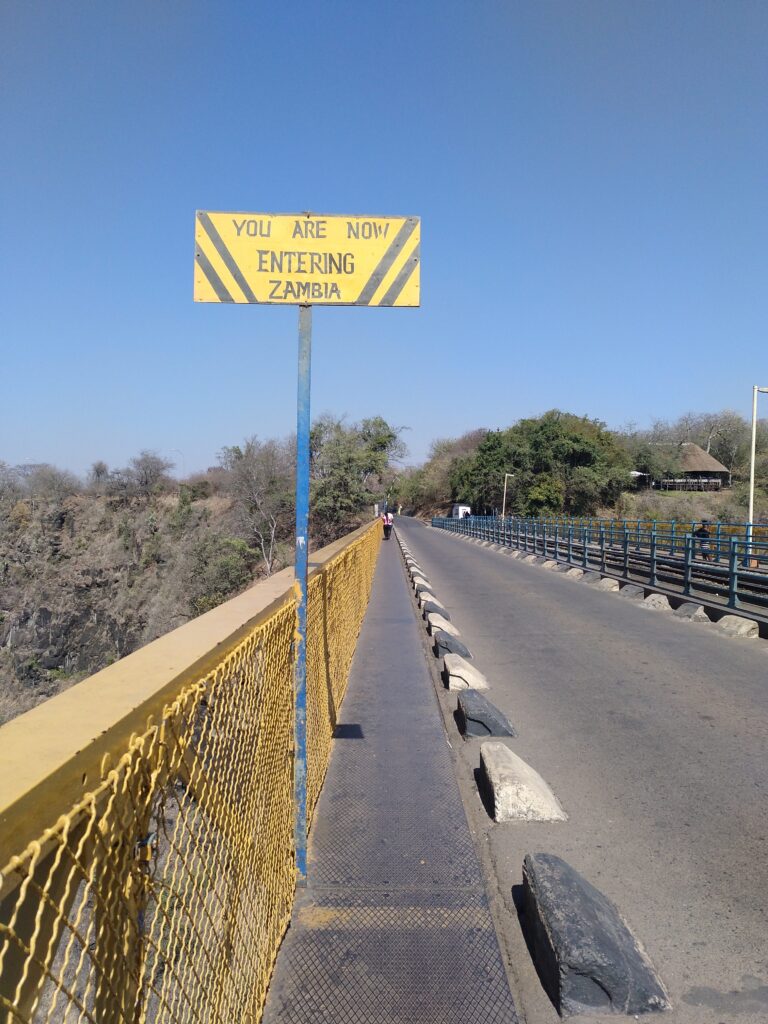
At the Bulawayo Museum, where you will have to pay a 2$ ticket per person, you will find the first trains that ran through the country, as well as various objects and stories from the time of colonization; where you will see all the comforts and luxuries that wagons had, as well as the different locomotives that a few years ago were circulating in this part of Africa.
Where to sleep in Matobo NP?
The park has huts and camps led by the Zimparks organization, which manages the national park. However, there are also private companies that manage accommodation inside the park. We highlight:
– Maleme Dam: This is a Zimparks-run campsite located right in the middle of the national park. It is a simple campsite, without electricity but with water points and toilets (in a somewhat decadent state). It has good shade and grass next to a water dam. The price of the campsite is 10 USD per person per night which you will have to pay at the entrance of the park.
– Mtsheleli Dam: This is a picnic area where you can also camp. It is located south of the national park, but has no facilities. Therefore, you will have to carry everything with yourself. The price is also 10 USD per person per night.
– World’s View Campsite: This campsite is located next to the World’s View picnic area where you can enjoy a fantastic sunset and good views of the surroundings. It is a fairly new and renovated campsite, has a restaurant, and the price is around 15 USD per person per night. This campsite is managed by the Farmhouse Matopos accommodation, where you can also find rooms and cabins. If you want to check out their website, you can click here.
– Matobo Hills Lodge: This national park lodge has rooms, a restaurant and a swimming pool; among other facilities. You can also go on safaris with their vehicles. Rates are 150$ per night and double room. For more information, you can visit their website here.
Our route
DAY 1: After arriving the day before from Masvingo, and doing wild camping on a side road a few kilometers from the main entrance to Matobo Hills, we got up early and were the first to enter into one of the most curious national parks in the country for its rock formations and rhinos. We paid for the ticket (luckily they accepted the credit card as we were getting shorter and shorter in cash) and started visiting the historic part of the park.
The first stop was in the caves of the White Rhino, where from above we began to marvel at the beauty of the landscape of the national park, with its characteristic kopijes and different granite peaks that characterized that environment. The cave paintings of the White Rhino showed the historical importance of this place for our ancestors, who had marked there the different fauna that found, among them, the white rhino.
After contemplating this first cave, we advanced to the World’s View where a guide was waiting for us at the reception ready to give us the ticket to visit the grave of Cecil Rhodes. When we told him that we thought we didn’t want to go in to visit a grave of a figure who had been very controversial by the local people in the country, he understood us perfectly. We were arguing because, as the guide rightly said, this person is also part of the story and should be told to everyone, even if it has caused a lot of harm and been a bad example; but we find it difficult to strike a balance between telling the story and how to do it without idolizing these figures.
Anyway, the guide allowed us to go the other way to see the views from World’s View, and they were really great. From up there you could see the whole Matobos at your feet, on a very sunny and warm day.
Later, on our way to our campsite inside the park that night, we stopped for a moment at the Pomongwe Cave, which seemed to us to be the weakest of the three caves we visited, although it is the only paid one. Our campsite was located next to Maleme Dam, right in the middle of the park, so it was a great place to stretch our legs and get closer to the water to see if we could see any animals.
We continued touring the historic part of Matobo Hills National Park visiting the Nswatuki Caves. These were more hidden and harder to get to, but downstairs in the parking area were information panels that explained very concisely the entire history of the park. We climbed the path that went up until we reached the cave that we liked most of the whole park.
Nswatuki Cave is one of the best-preserved cave paintings, where you can see in detail the different animals and human figures that are drawn. We had a good time, eating peanuts and settling on land that thousands of years ago was also trampled by groups of people seeking refuge.
After visiting the historic part, we continued until we reached the entrance of the other part of the park: the Game Park area. We got there around 12 noon, the peak heat hour, so it wasn’t the best time to see animals. Anyway, at least we didn’t go down without explaining ourselves first. As expected, we only found a few hippos and antelopes well hidden in the shade, so we decided to stop at Mpophoma Dam for lunch at the picnic area the chickpea salad we had made the day before.
After lunch and rest for a while, we continued our tour of the Game Park without much luck. We were returning to the campsite when, suddenly, we heard a loud noise on the wheel. It looked like something was stuck (a stone or a branch) to the front wheel of the co-pilot, but we weren’t able to see. To make sure it wasn’t important, we removed the wheel and looked inside. Luckily, everything was fine so we continued while we heard, from time to time, this mysterious noise.
We arrived at the campsite sweaty after removing the wheel in full sun, so we took a good shower and set up our rooftent in the middle of a starry sky. It was time to go to bed in a park that mixes history with animals. We had seen the first part very well; but the second one, the animals, we hadn’t seen as many as we expected.
DAY 2: We got up early to go see the rhinos. It is known that these animals usually leave early in the morning, which is when the heat is less intense. So we arrived at the entrance to Game Park, and there the ranger advised us to go to the Zhamando area, which is where rhinos are usually located.
We went straight to Zhamando where there was a lookout point. There, there was no trace of rhino. We met two rangers who made sure no one was hunting these animals, and they told us they hadn’t seen them that morning either. They couldn’t tell us how many rhinos there were in the park because it’s confidential, but they advised us to go to an area 8 kilometers from where we were.
We went there to see if we could find these animals, but along the way we saw nothing. We weren’t so lucky today as we were some days ago in the Mana Pools (you can read our experience here), so we decided to go on our way back to Victoria Falls, which was the only exit border opened of the country for the covid theme.
Just before we left, we came across a walking ranger who told us he had seen a rhino on the left turnoff about 6 kilometers away. We didn’t think about it and went there. We weren’t lucky either and went back to the main road of the park… It really wasn’t the day today. Just as we were doing the same route again to leave, another ranger who spoke almost no English stopped us and said he was getting in the car because he had seen two white rhinos some minutes ago!
We, before he went up, told him we weren’t lucky; but that ranger was very excited and got in the car anyway with us. He would point with his hand at us, and from time to time he would stop us to follow in the footsteps of the rhinos. Once in a while, he would get out of the car and run to the middle of the forest. It turns out that rhinos are also a fast animal.
On one of those descents, he came back and told us to get out of the car. We were close to the rhinos and now it was time to go quietly to where they were so they wouldn’t escape. We followed the ranger who was walking fast, and then he started running. Rhinos were moving too, so we had to be faster than them!
Until we got behind a tree and there we saw them: two specimens of white rhinos that at the slightest noise we made, started running again and it was impossible to catch them again from where we were…
We were very lucky to finally see these animals which are the most important ones that can be found in the Matobo NP! We would never have imagined that we would find a ranger, and that we would run through the middle of the national park in search of rhinos. However, Game Park is not one of the best in the country in terms of animal concentration. Not many are seen compared to other parks like Mana Pools or Hwange.
Now it was time to say goodbye to the Matobo NP, one of the most unique parks in the country. The park has not mainly wildlife, but has a very important historical and landscape part such as cave paintings and his kopitjes. It was time to say goodbye to Zimbabwe and drive to Victoria Falls, our next destination, to do a PCR test and cross into Botswana.

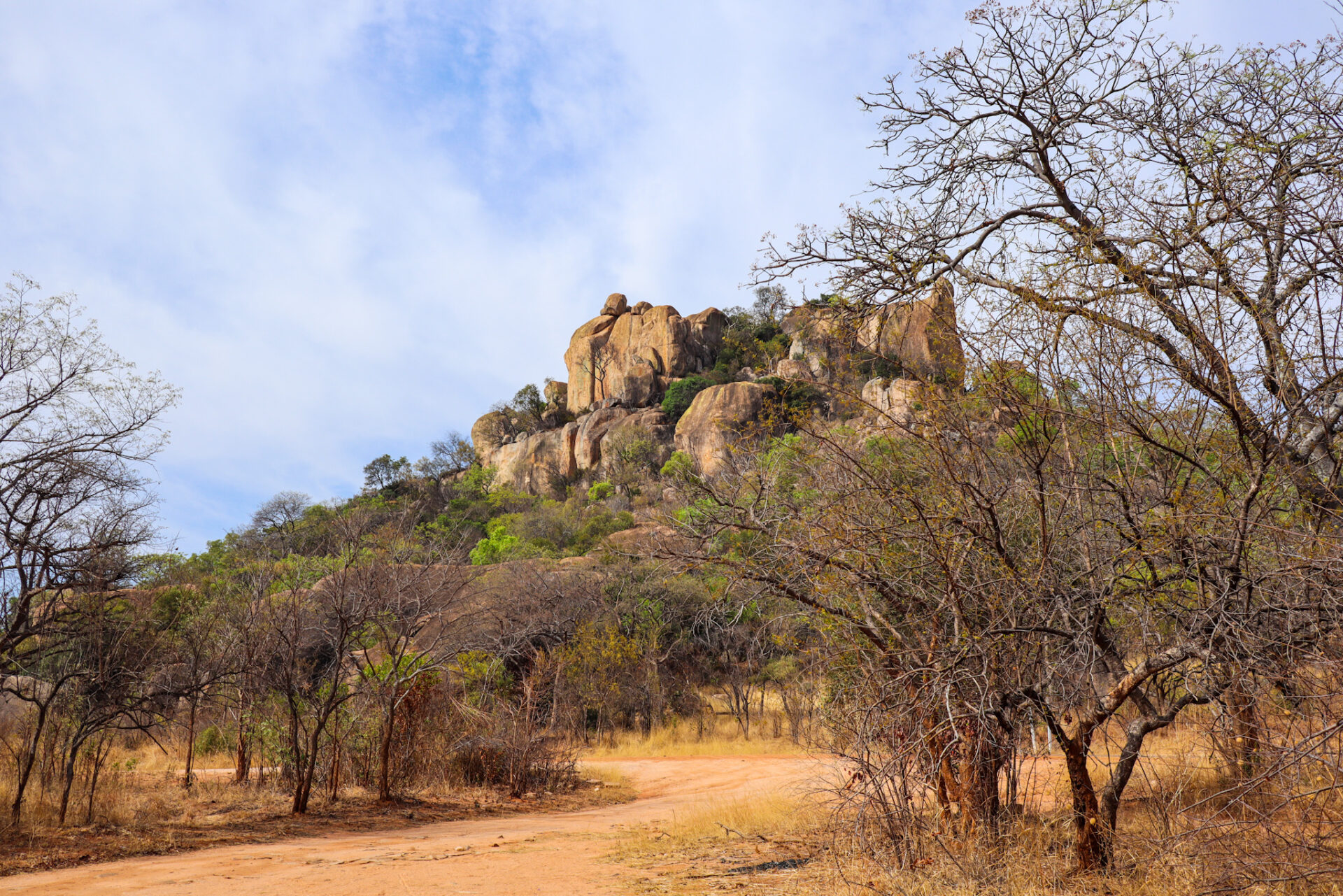

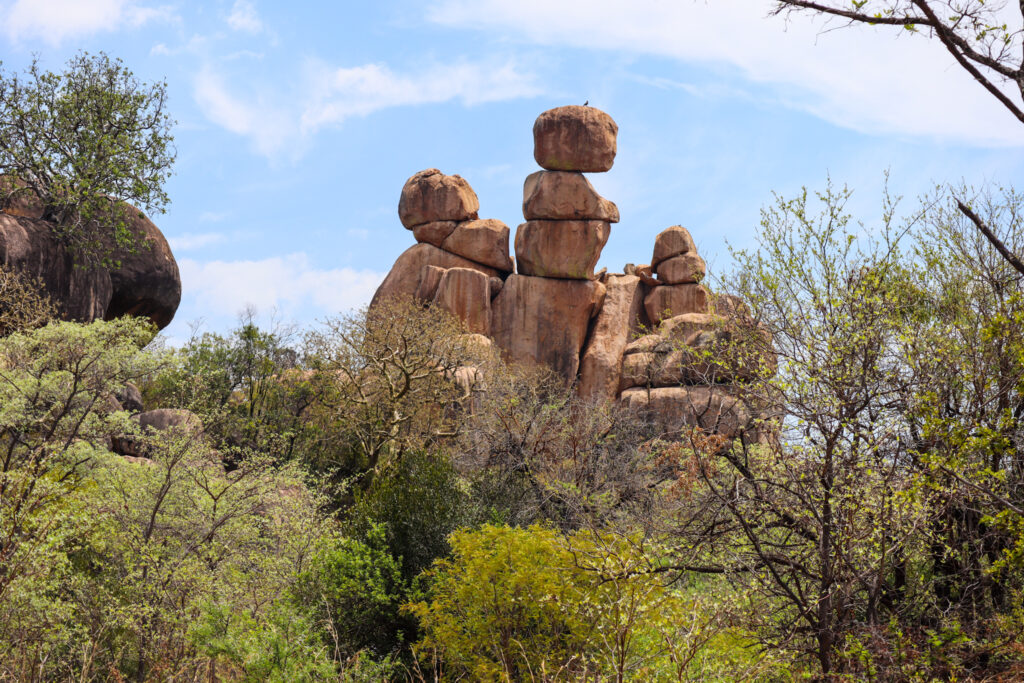
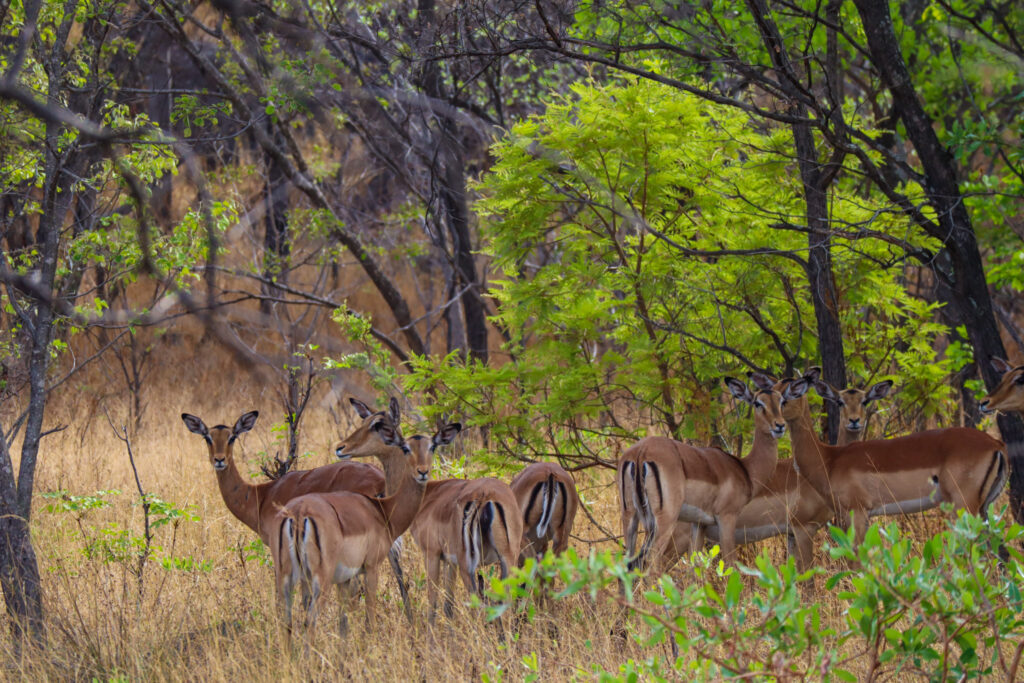
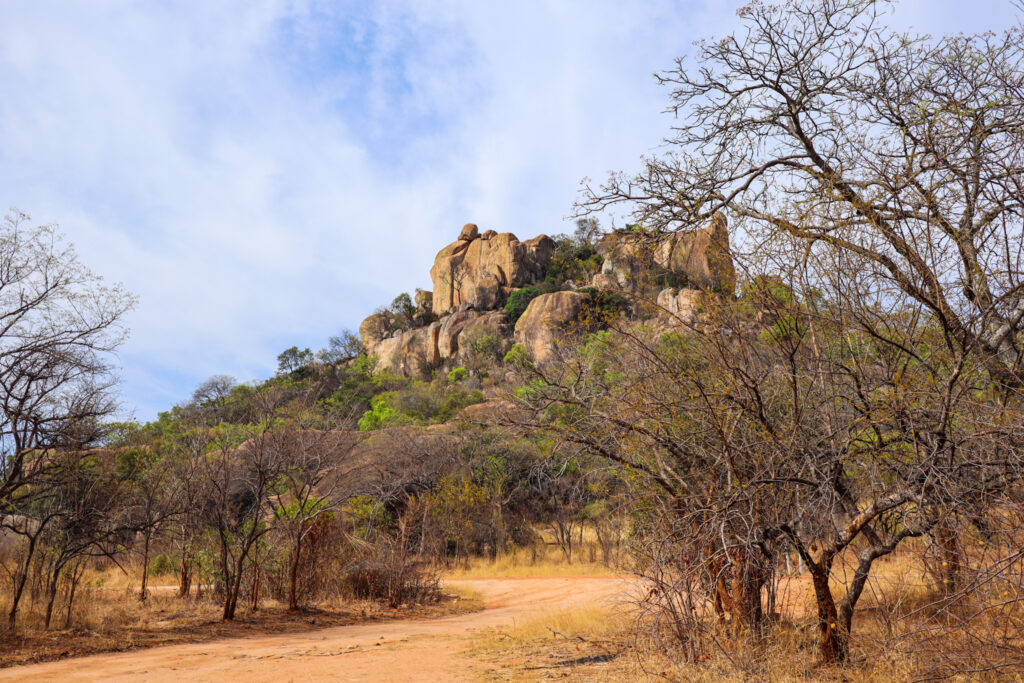
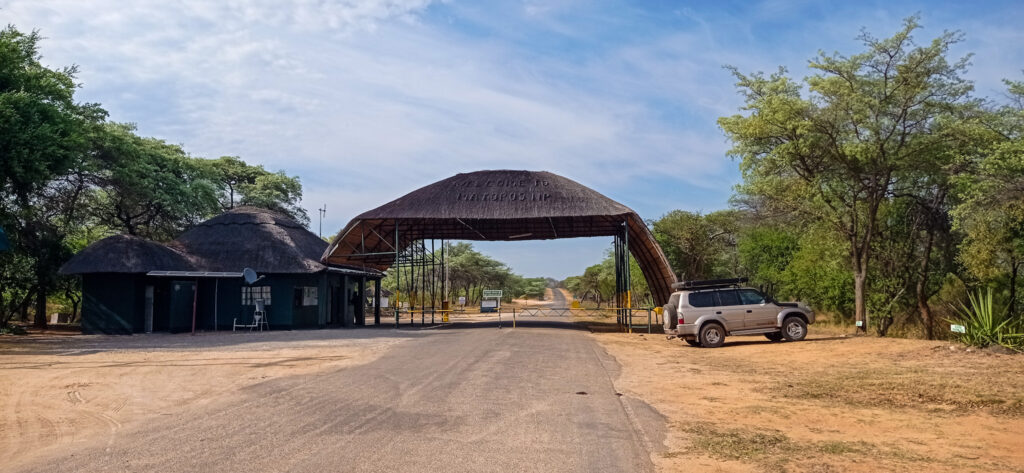
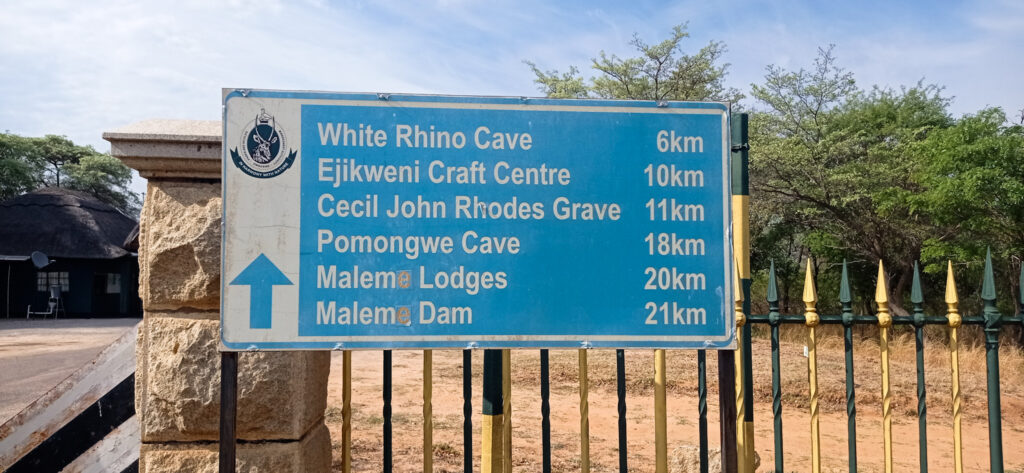


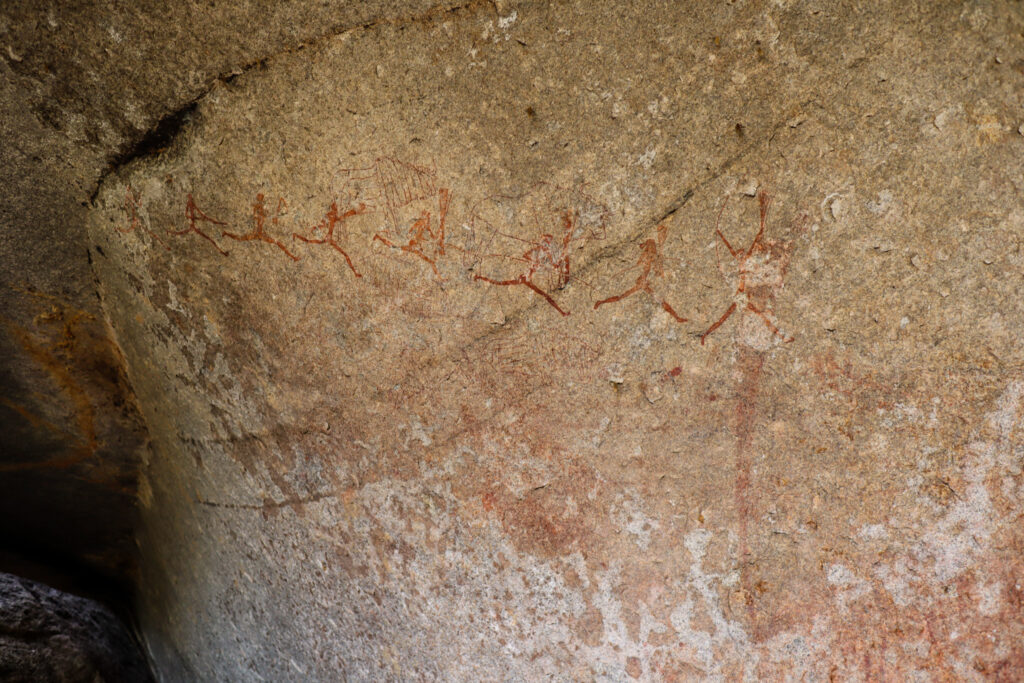
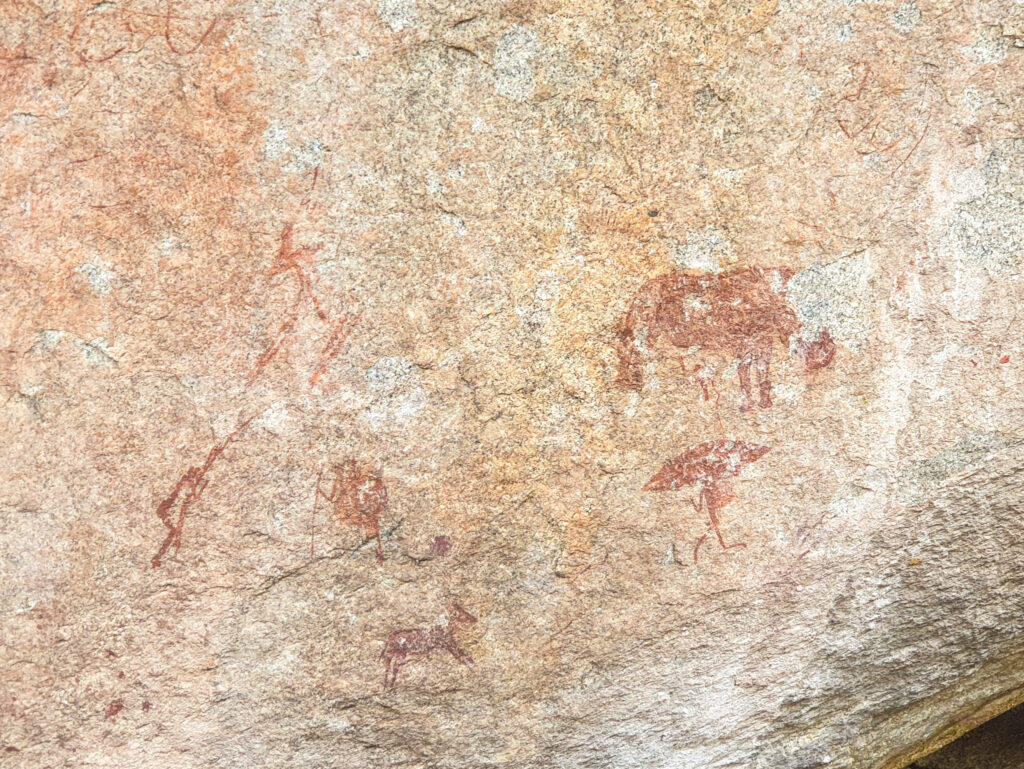
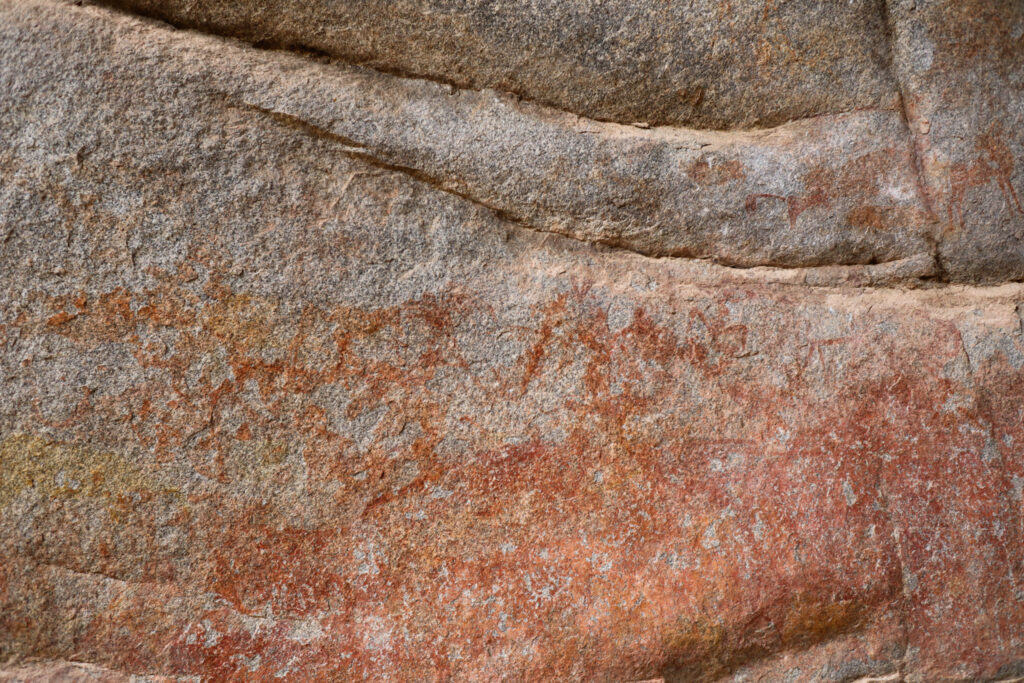
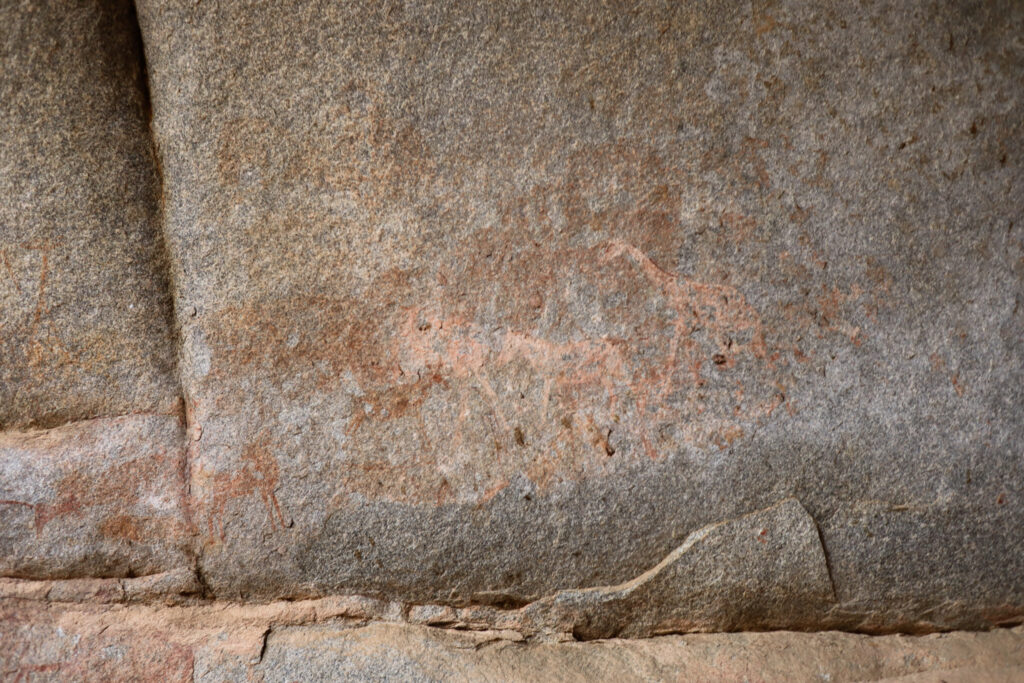
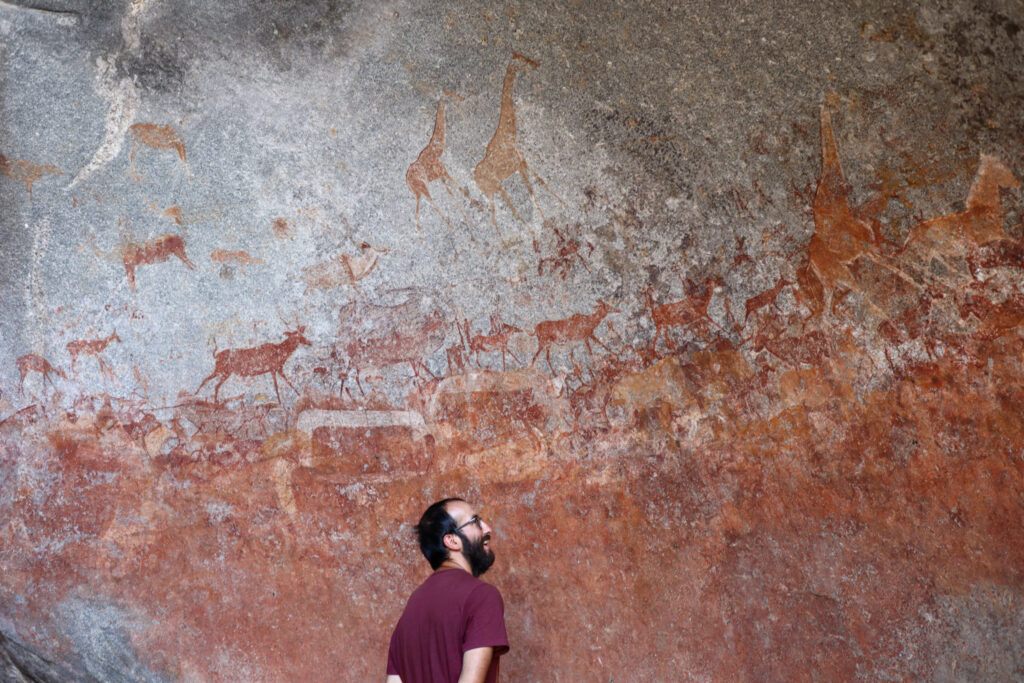
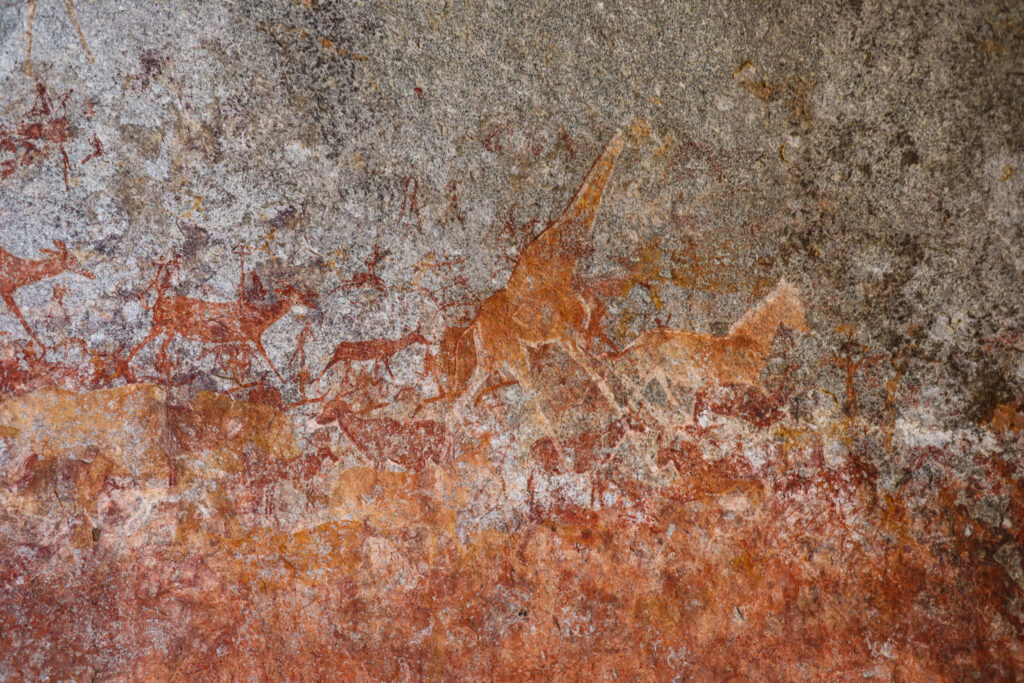

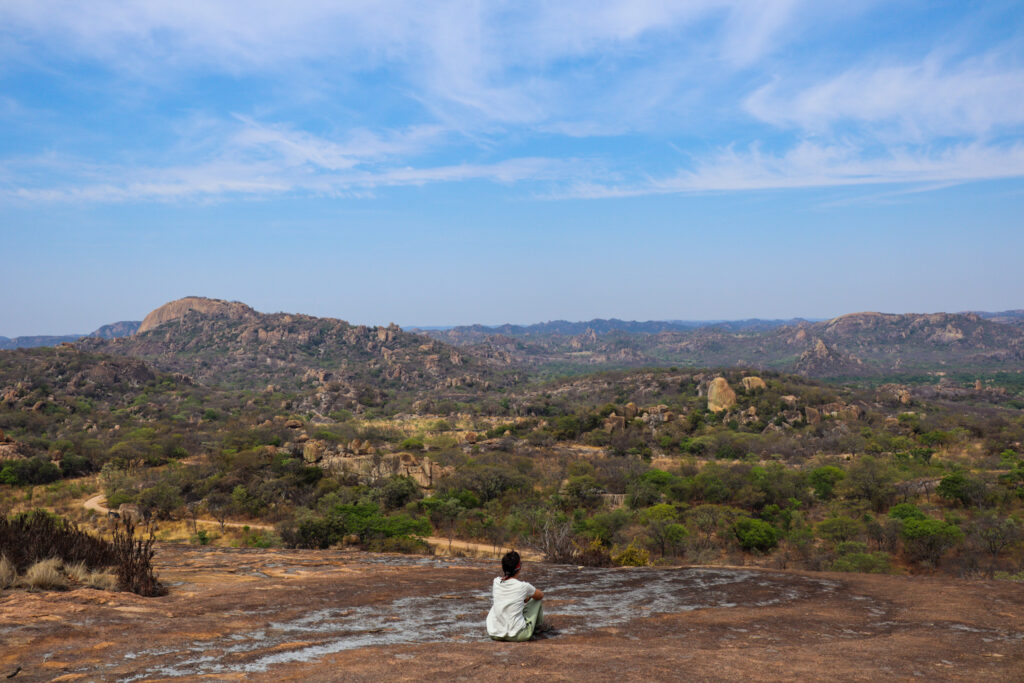
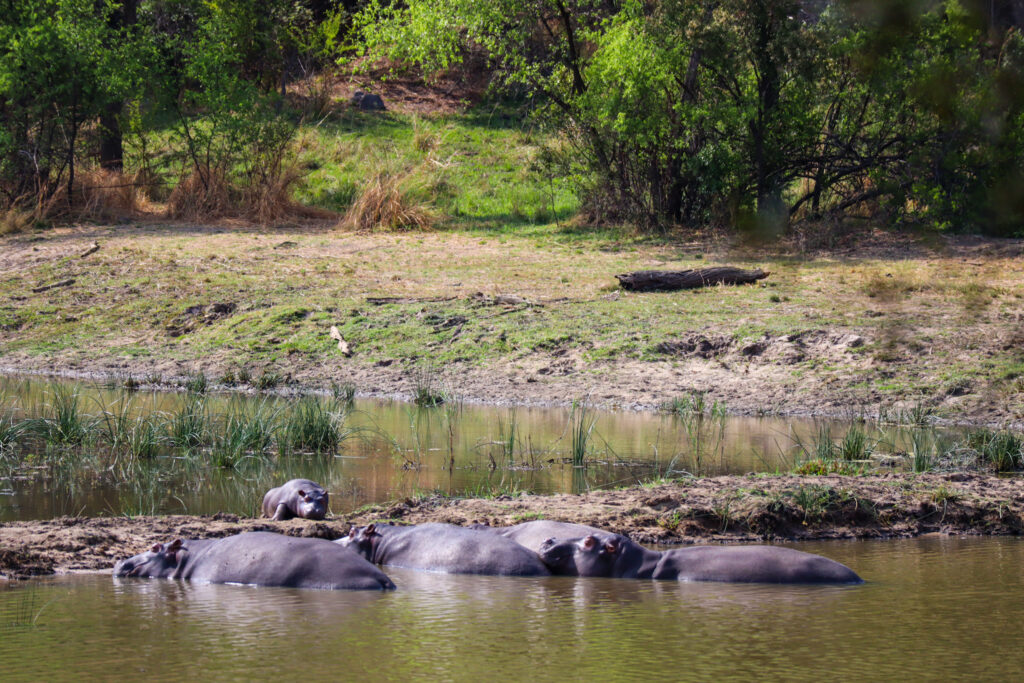
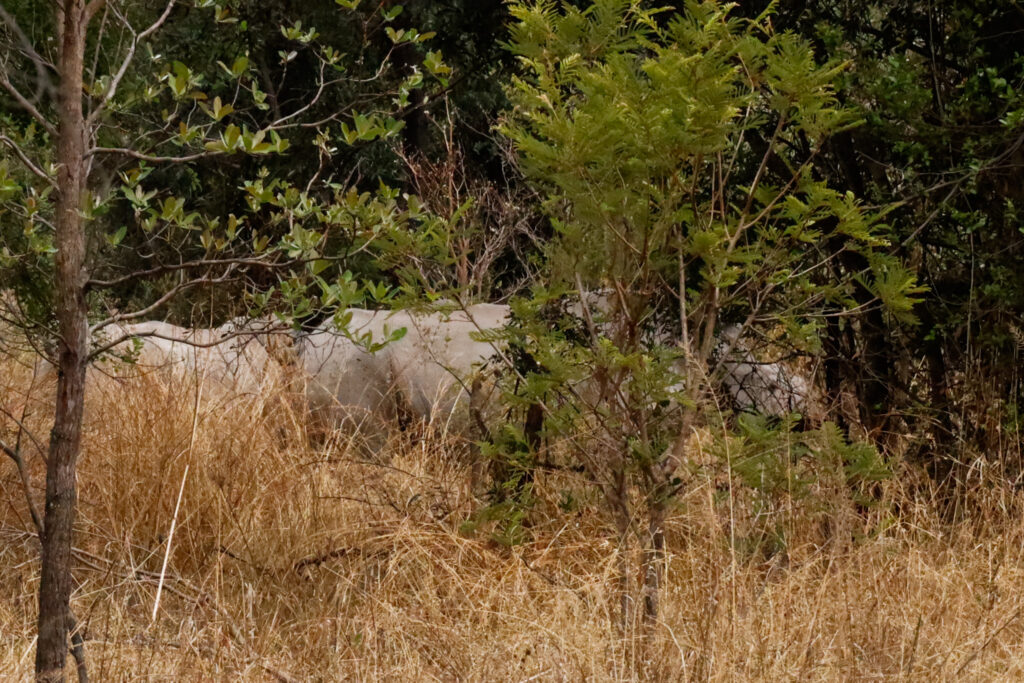
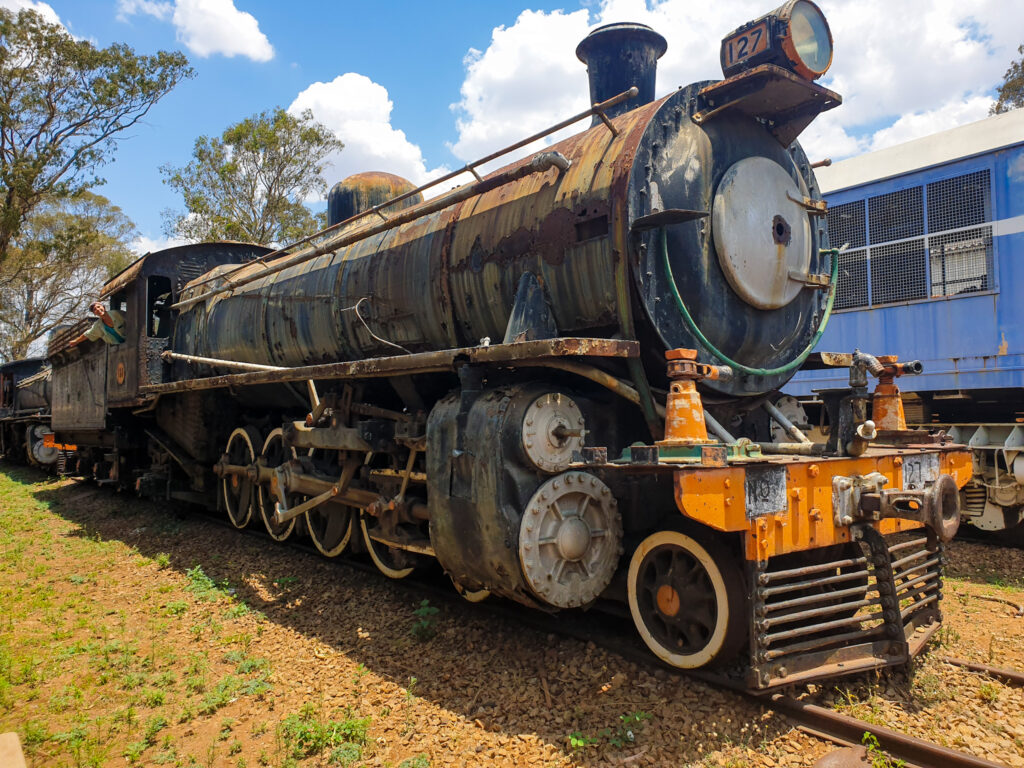
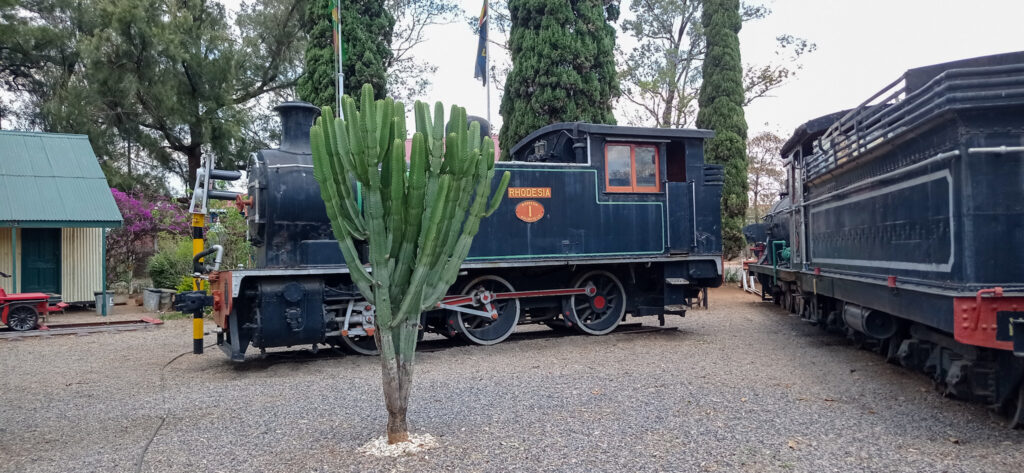

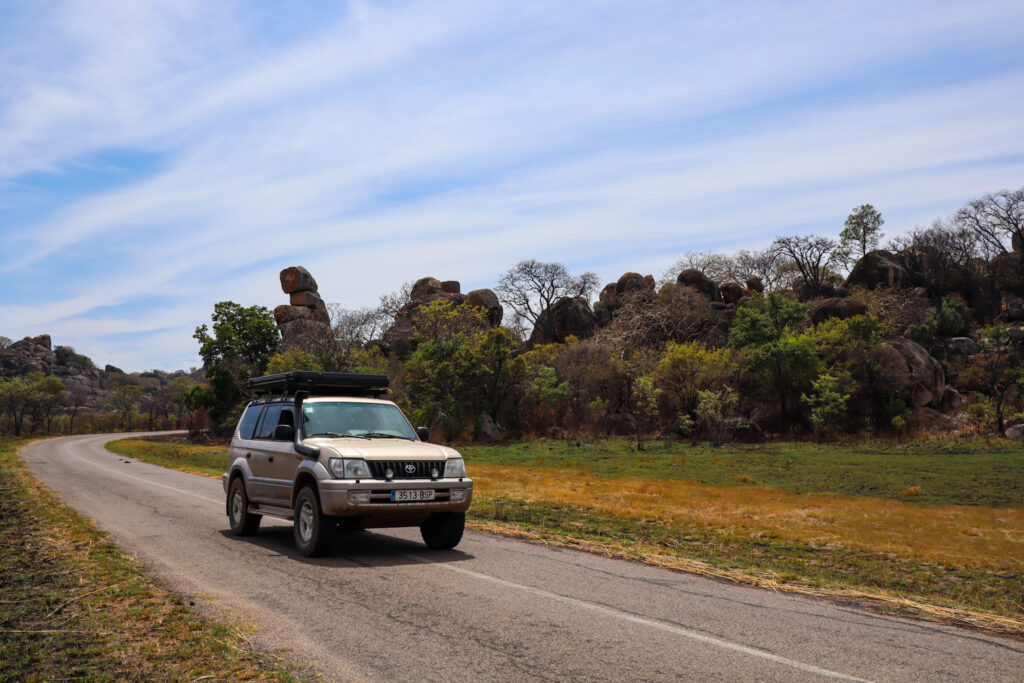

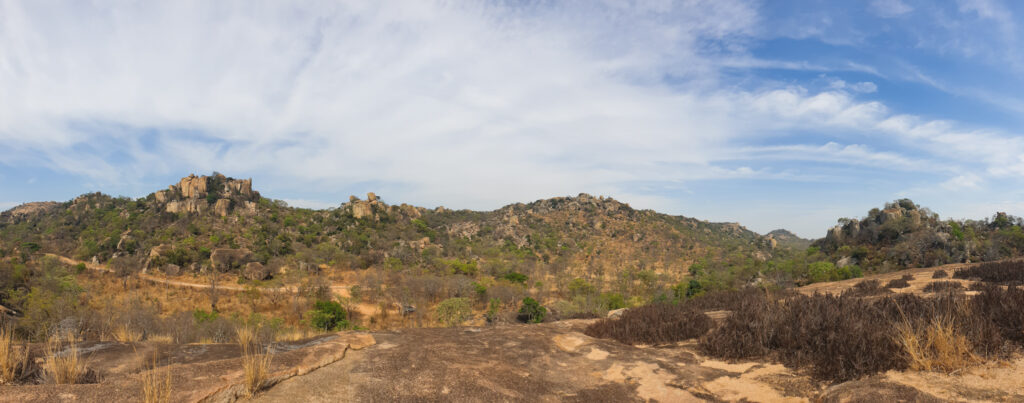


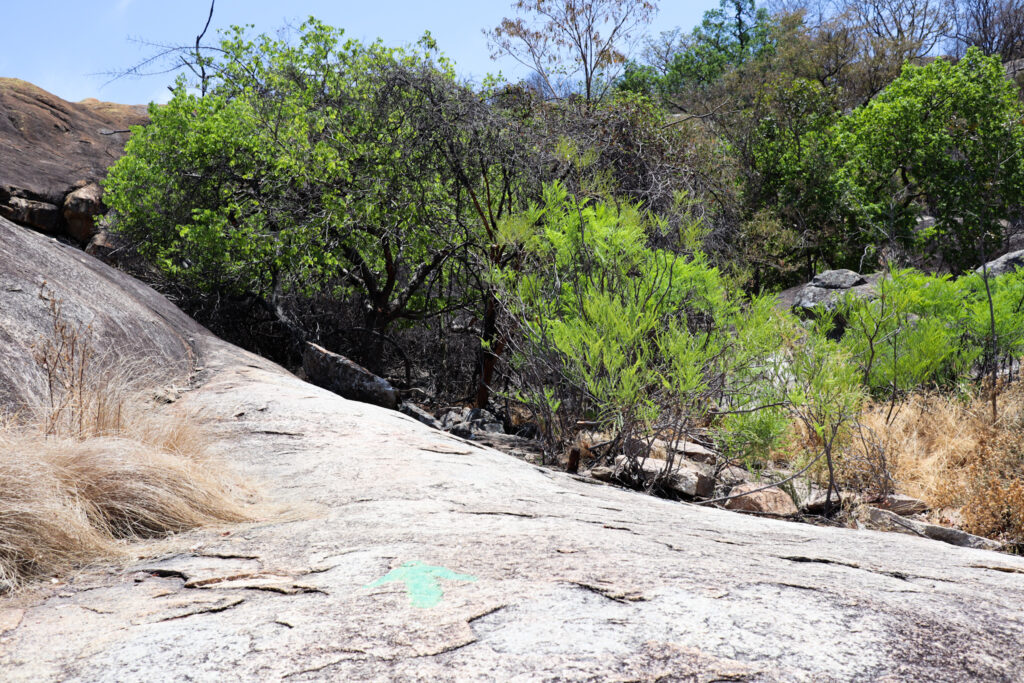
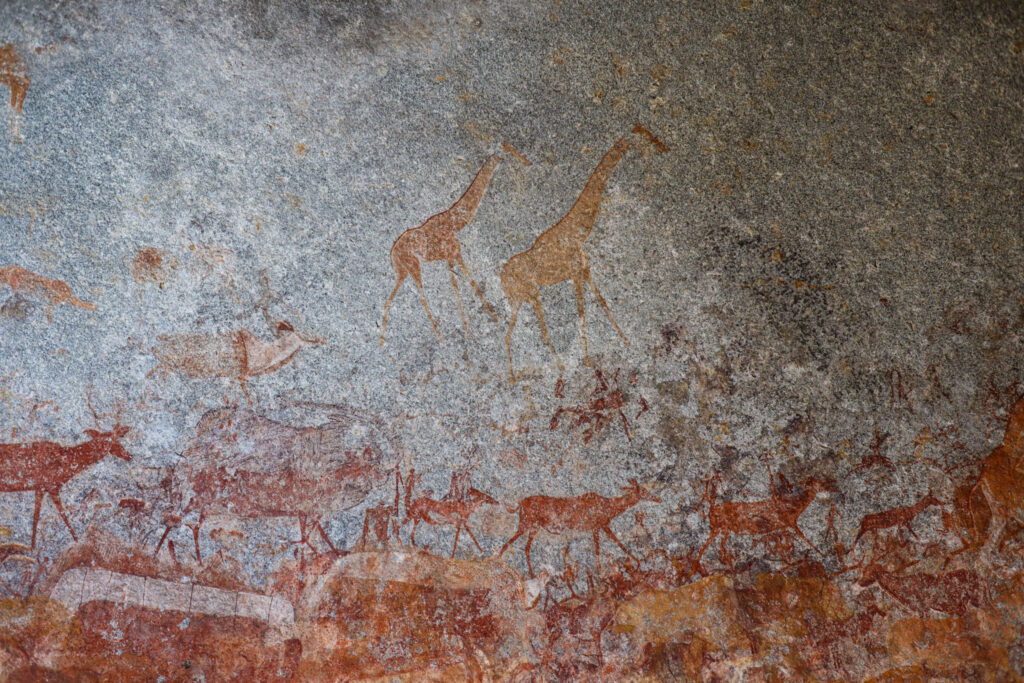
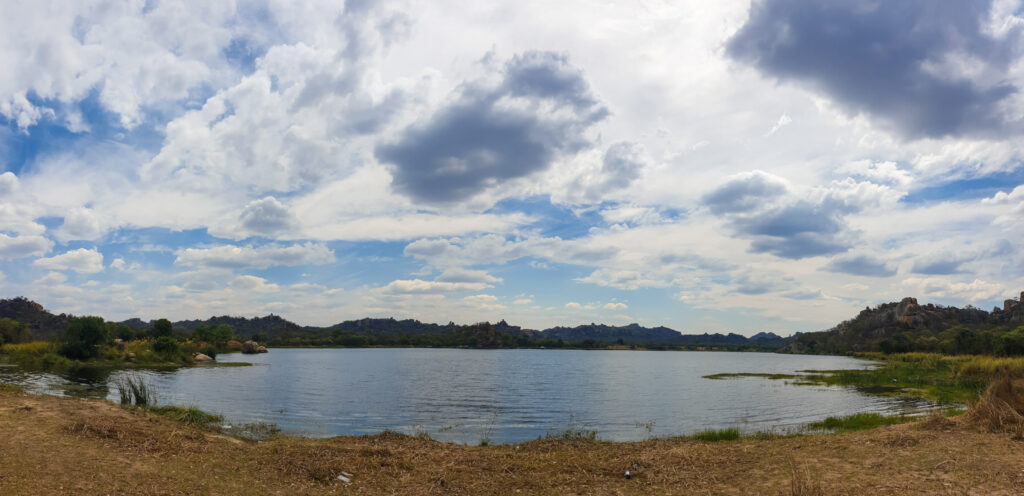
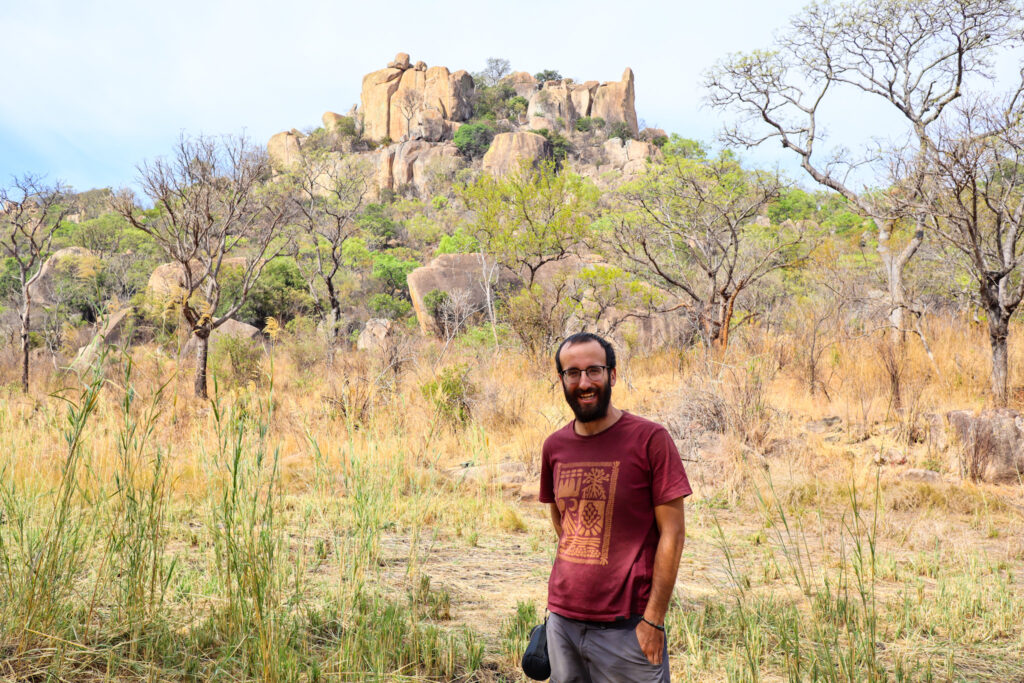
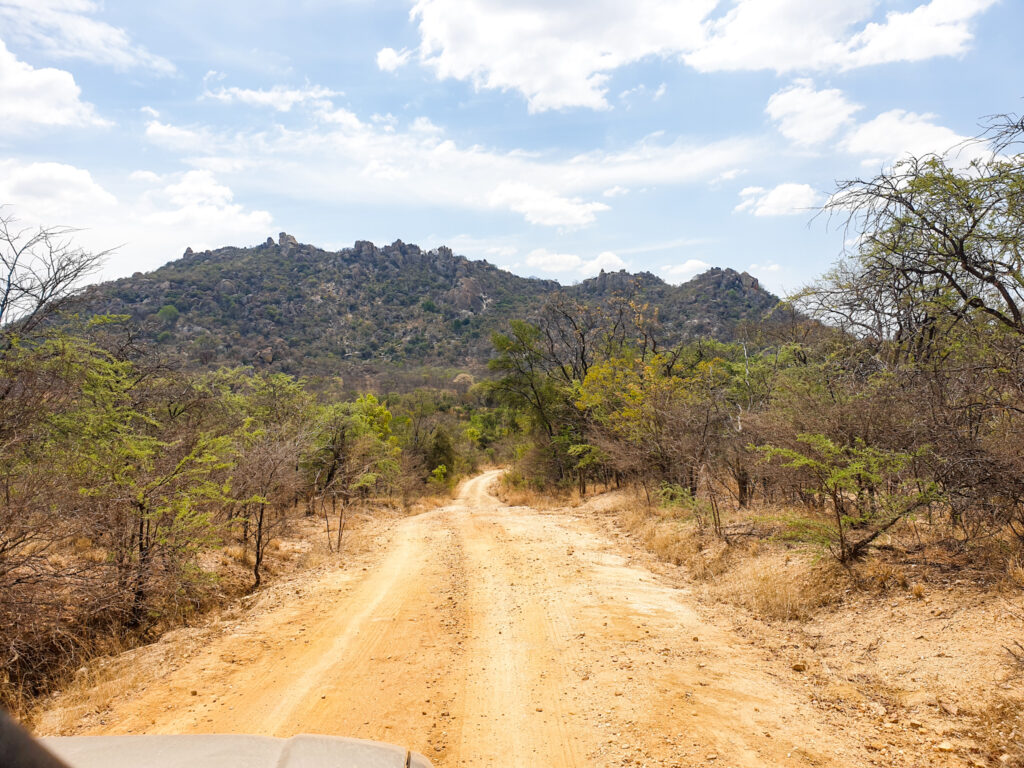

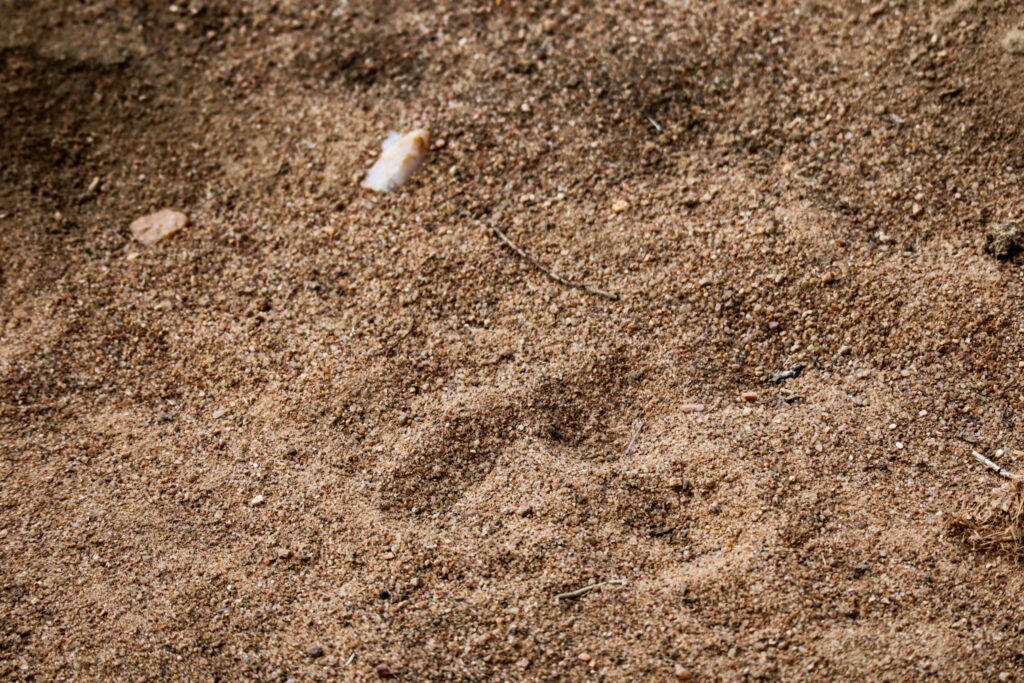
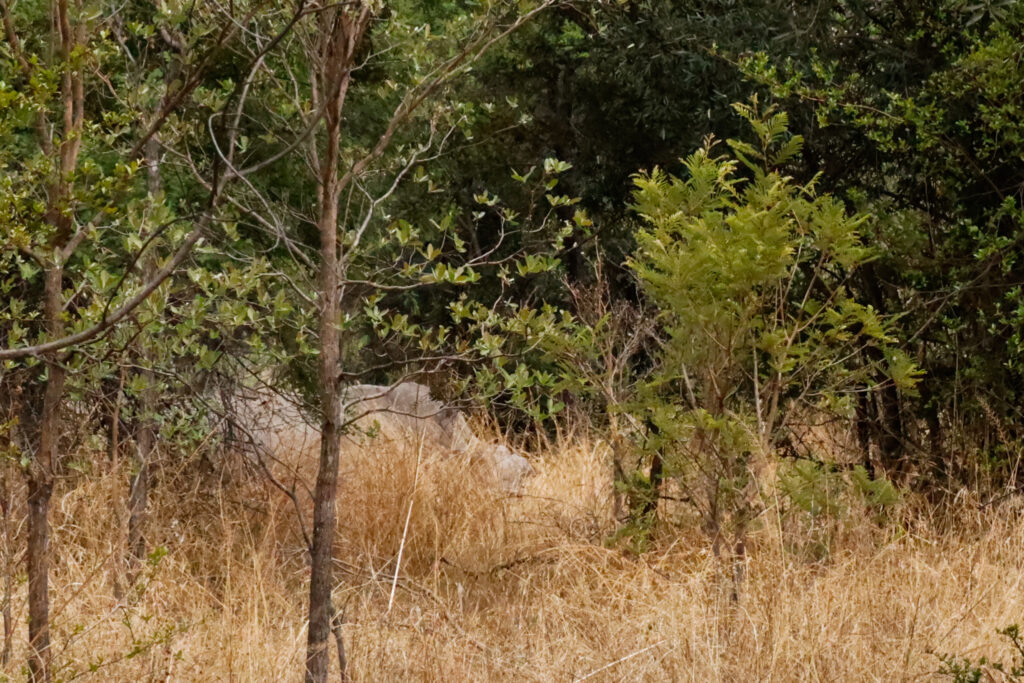
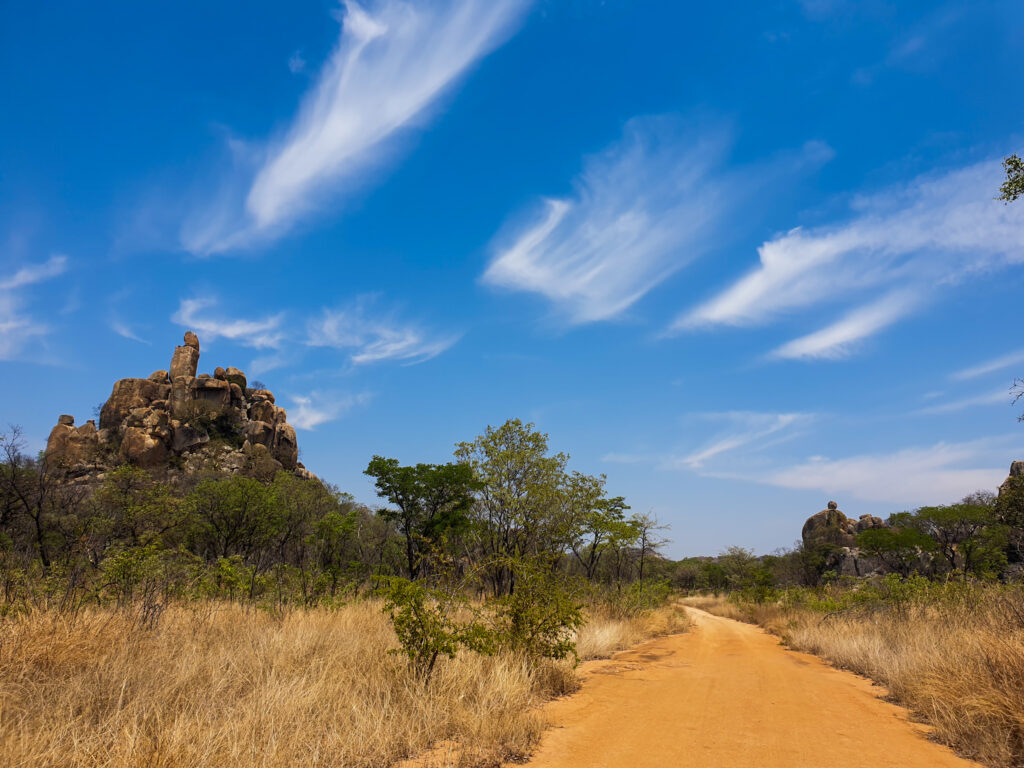

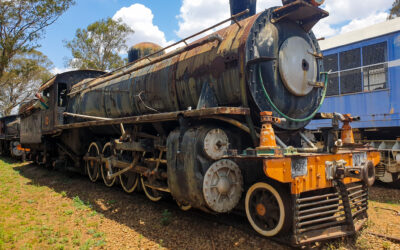
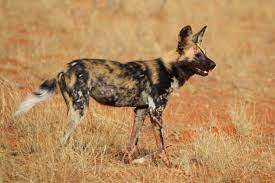
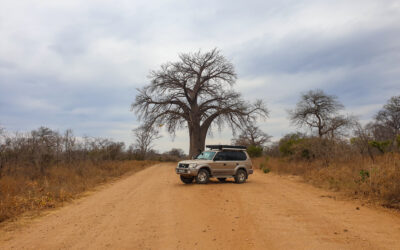


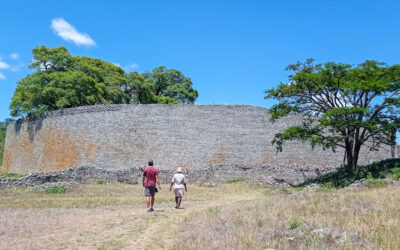


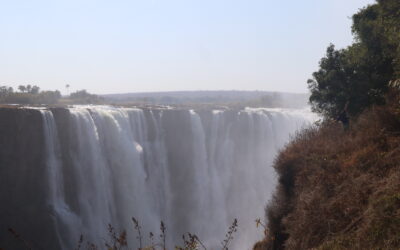
0 Comments